History > MARK SCHEMES > GCE History A Y317/01: China and its rulers 1839-1989 Advanced GCE Mark Scheme for November 2020 (All)
GCE History A Y317/01: China and its rulers 1839-1989 Advanced GCE Mark Scheme for November 2020
Document Content and Description Below
GCE History A Y317/01: China and its rulers 1839-1989 Advanced GCE Mark Scheme for November 2020 Oxford Cambridge and RSA Examinations GCE History A Y317/01: China and its rulers 1839-1989 Advanc... ed GCE Mark Scheme for November 2020Oxford Cambridge and RSA Examinations OCR (Oxford Cambridge and RSA) is a leading UK awarding body, providing a wide range of qualifications to meet the needs of candidates of all ages and abilities. OCR qualifications include AS/A Levels, Diplomas, GCSEs, Cambridge Nationals, Cambridge Technicals, Functional Skills, Key Skills, Entry Level qualifications, NVQs and vocational qualifications in areas such as IT, business, languages, teaching/training, administration and secretarial skills. It is also responsible for developing new specifications to meet national requirements and the needs of students and teachers. OCR is a not-for-profit organisation; any surplus made is invested back into the establishment to help towards the development of qualifications and support, which keep pace with the changing needs of today’s society. This mark scheme is published as an aid to teachers and students, to indicate the requirements of the examination. It shows the basis on which marks were awarded by examiners. It does not indicate the details of the discussions which took place at an examiners’ meeting before marking commenced. All examiners are instructed that alternative correct answers and unexpected approaches in candidates’ scripts must be given marks that fairly reflect the relevant knowledge and skills demonstrated. Mark schemes should be read in conjunction with the published question papers and the report on the examination. © OCR 2020Y317/01 Mark Scheme November 2020 2 Annotations Annotation Meaning of annotation Blank Page Highlight Off-page comment Assertion Analysis Evaluation Explanation Factor Illustrates/Describes Irrelevant, a significant amount of material that does not answer the question Judgement Knowledge and understanding Provenance Simple comment Unclear View Synthesis Continuity/ChangeY317/01 Mark Scheme November 2020 4 Subject Specific Marking Instructions Section A Mark Scheme Question Answer Mark Guidance 1 Evaluate the interpretations in both of the two passages and explain of which you think is more convincing as an explanation the origin of the I-ho ch’uan (Boxers) and their links to the Court. In locating the Interpretations within the wider historical debate, answers might argue that Interpretation A characterises the Boxers as a fanatical sect and argues that they were actively sponsored by the imperial Court. • In evaluating Interpretation A, answers might argue it is valid because some members and supporters of the Boxers believed or argued that western developments in China such as railways and telegraph wires which disturbed dragons or created poisons. • Answers might argue that Interpretation A is valid because the aggressive conversion activity of missionary groups like the Steyl Society in Shandong had indeed caused much conflict with traditional religious groups. • Answers might argue that Interpretation A is valid because in 1900, when the uprising spread from the countryside to the major cities, Cixi threw her support behind the Boxers. • Answers might argue that Interpretation A is valid because Prince Duan was a strong supporter of the Boxers, and the anti-foreign faction at Court 30 • No set answer is expected • At Level 5 and above answers will evaluate both interpretations, locating them within the wider historical debate about the issue and using their own knowledge, and reach a balanced judgement as to which they consider the most convincing about the issue in the question. • To be valid, judgements must be supported by relevant and accurate material. • Knowledge must not be credited in isolation, it should only be credited where it is used to analyse and evaluate the interpretations, in line with descriptions in the levels mark schemeY317/01 Mark Scheme November 2020 5 saw them as a means to consolidate the 1898 coup and roll back foreign influence in China. • Answers might argue that Interpretation A is invalid because active Court support and organisation of the Boxers developed after the crisis had significantly worsened, spread to Beijing, and foreigners had intervened. • Answers might argue that Interpretation A is invalid because it ignores the long context of controversial foreign intervention and modernisation in China, which led to divisions in Court about the Boxers and a significant group of supporters of the emperor, rather than universal support. In locating the Interpretations within the wider historical debate, answers might argue that Interpretation B suggests that the development of the Boxers was a grassroots movements, that it was a rational response to hatred of foreign influence in China as well as other socio-economic pressures and that the Court were wary of it. • In evaluating Interpretation B, answers might argue that it is valid because the failure of the Hundred Days Reform of 1898 was an important turning point in the Court towards modernisation and the growth of influence of the anti-foreign/antimodernisation faction, who advocated making use of the Boxers to repel foreign influence. • Answers might argue that it is valid because the rise of the Boxers occurred in Shandong which was prone to socio-economic problems like droughts and bad harvests. • Answers might argue that B Interpretation is valid because attacks on missionaries and symbols ofY317/01 Mark Scheme November 2020 6 westernisation like railways were a particular focus of the Boxers. • Answers might argue that the Interpretation is valid because the rise of the Boxers occurred against a backdrop of almost a century of western influence, particularly the hated ‘unequal treaties’ and the growing social and legal influence of missionaries in local communities which caused resentment. • Answers might argue that the Interpretation is invalid because it ignores the way the Boxers styled themselves as a secret society, like other banned martial arts groups, used rituals and uniforms and appealed to beliefs in the supernatural, which helped them gain support in local communities. • Answers might argue that the Interpretation is invalid because it downplays the extent to which Cixi called for the Boxers to resist foreign actions when the crisis deepened in mid-1900.Y317/01 Mark Scheme November 2020 7 Section B Mark Scheme Question Answer Mark Guidance 2* ‘Agriculture always proved more challenging to reform than industry.’ How far do you agree with this view of the economy of China in the years 1839 to 1989? In supporting the hypothesis in the question, it might be argued that the size of China’s rural areas, plus their diversity and distance from the urban centres made agriculture difficult to reform. • Answers might consider the focus on industrial modernisation under the Qing, the challenges of improving small land holdings, the risk of destabilising the traditional handicrafts industry and the resistance of rural areas to any modernisation, which was seen as ‘foreign’. • Answers might consider the limited modernisation and increased foreign investment that occurred in the Nationalist period, and how this was not mirrored in agriculture as the GMD were unable to overcome landlord resistance, despite the severe food supply and environmental problems in rural areas that had in part caused the collapse of the Qing dynasty. • Answers might consider the severe consequences of the failure of the Great Leap Forward and associated policies such as Lysenkoism and ‘sparrowcide’, which resulted in the Great Famine. • Answers might consider that after some initial success and in the context of huge population growth, Deng Xiaoping’s policies achieved limited change, with a stagnation in production and food shortages. 25 • No set answer is expected • At higher levels answers might establish criteria against which to judge • To be valid, judgements must be supported by relevant and accurate material. • Knowledge must not be credited in isolation; it should only be credited where it is used as the basis for analysis and evaluation, in line with descriptions in the levels mark scheme.Y317/01 Mark Scheme November 2020 8 • Answers might consider the holistic picture that Chinese industry was far more transformed than Chinese agriculture when the situation in 1839 is compared to that in 1989. In challenging the hypothesis in the question, answers might argue that lack of progress in agriculture in the first half of the period was largely due to lack of interest, and that after the Communist Party took power agriculture was reformed. • Answers might consider that the CCP did achieve very widespread land reform after the revolution, in line with their ideology, and that this was achieved with widespread support of the peasantry alongside successful policy initiatives. • Answers might consider that after the disastrous effects of the Great Leap Forward, agricultural policy was changed with a more pragmatic than ideological focus, problems were resolved and production grew again. • Answers might consider that Deng Xiaoping’s reforms to agriculture and the ‘household responsibility system’ saw an increase in production in the early years. • Answers might consider the limitations of selfstrengthening and the damage caused by economic imperialism, so that industrial development proved difficult to achieve at any scale or pace throughout the rule of the Qing dynasty. • Answers might consider that Mao’s attempts to reform industry through the use of the Five Year Plans failed to achieve all the desired effects and growth was not sustainable.Y317/01 Mark Scheme November 2020 9 3* ‘Social change threatened Chinese governments throughout the period 1839 to 1989.’ How far do you agree? In supporting the hypothesis in the question, it might be argued that social change was associated with resistance, uprisings and revolutions. • Answers might consider the divisive impact of westernisation during the reign of the Qing and resulted, for example, in the Boxer Rising, conflict with Western powers and the collapse of the dynasty. • Answers might consider the growth of the urban middle classes, which proved to be a threat under the Qing, with the rise of nationalism, and were perceived as a threat by Mao, for example in the crackdown after the Hundred Flowers Campaign and during the Cultural Revolution. • Answers might consider that social change led to the growth of communism in China, which led to civil war and the collapse of the nationalist government. • Answers might consider that population growth led to famines and land hunger in rural areas, which caused discontent, especially under the Qing. • Answers might consider that the growth of Christianity under the Qing caused discontent and rebellion, for example by influencing the religious beliefs of the Taipings. • Answers might consider that social change in the later twentieth century necessitated significant changes to communist policies, particularly economic liberalisation, in order to make sure communism could remain sustainable. 25 • No set answer is expected • At higher levels answers might establish criteria against which to judge • To be valid, judgements must be supported by relevant and accurate material. • Knowledge must not be credited in isolation; it should only be credited where it is used as the basis for analysis and evaluation, in line with descriptions in the levels mark scheme.Y317/01 Mark Scheme November 2020 10 In challenging the hypothesis in the question, answers might argue that social change did not always threaten Chinese governments, and some actively sought to promote it. • Answers might consider that the growing urban middle class was a force for modernisation in Qing China. • Answers might consider that the nationalists actively promoted social change through the New Life Movement, and were able to attain and maintain power due to the support of the urban, westernising middle class, and that destabilisation was due to foreign invasion, not just social change. • Answers might consider that despite social change, stabilising beliefs in Confucianism, the Mandate of Heaven and veneration of strong leaders continued – for example Mao was associated with the Mandate of Heaven. • Answers might consider that urbanisation allowed Chinese governments to enact policy and control the population more easily, particularly in Communist China during the campaigns of the 1950s and the Cultural Revolution. • Answers might consider that changes in the status of Chinese women under communism frequently led them to support the government. • Answers might consider that Deng Xiaoping actively sought some forms of social change to stabilise communist rule. • Answers might consider that social change was not chronologically or geographically even, which meant that uprisings and rebellions were often confined to particular regions and thus easier to control.Y317/01 Mark Scheme November 2020 11 4* ‘The Unequal Treaties were the most important turning point in China’s relationship with foreign powers in the years 1839 to 1989.’ How far do you agree? In supporting the hypothesis in the question, it might be argued that in many ways the Unequal Treaties defined China’s orientation toward the wider world up to the end of the period. • Answers might consider that the Unequal Treaties were perceived as imposed and deeply unjust, which led to enduring suspicion of foreigners, which perpetuated to at least the rule of Deng Xiaoping, symbolised by British possession of Hong Kong throughout the period. • Answers might consider that the Unequal Treaties ushered in a period of growing western influence in China, particularly economic influence, but also over politics and ideology. • Answers might consider that events and developments that arose as a consequence of the Unequal Treaties, such as attacks on foreigners, foreign assets, and uprisings such as the Boxers and ‘Resist America, Aid Korea’, led to a declining status and reputation of China in the eyes of foreign powers. • Answers might consider that the Unequal Treaties opened China up as a target for aggression, economic gain and land grabbing from numerous powers across the period, including Britain, France, Germany, Japan and Russia. In challenging the hypothesis in the question, answers might argue that the Unequal Treaties were 25 • No set answer is expected • At higher levels answers might establish criteria against which to judge • To be valid, judgements must be supported by relevant and accurate material. • Knowledge must not be credited in isolation; it should only be credited where it is used as the basis for analysis and evaluation, in line with descriptions in the levels mark scheme.Y317/01 Mark Scheme November 2020 12 the product, rather than the cause, of growing foreign influence in China. • Answers might consider that the Opium Wars marked the beginning of aggressive behaviour of foreign powers toward China, which quickly escalated from seeking trading posts on the coast, to incursions into mainland China and efforts to influence policy and the political system. • Answers might consider that the Nationalist seizure of power led to a period where China actively sought foreign, Western influence, which ultimately culminated in US military intervention to support the regime, but that this was not long lasting. • Answers might consider that the Japanese invasion of China, after a period of aggression, was a more significant turning point, and led to China having a strongly defensive orientation toward Japan and other powers in the region. • Answers might consider that the Communist takeover of 1949 was a more important turning point, with a re-orientation of China to the communist powers, particularly the USSR. • Answers might consider the significance of the Korean War and the Sino-Soviet split in China’s relations with both the Western powers and the USSR. • Answers might consider the significance of thawing relations with the West in the later Cold War, particularly the visit of Nixon.Y317/01 Mark Scheme November 2020 13 APPENDIX 1 – this contains a generic mark scheme grid AO3: Analyse and evaluate, in relation to the historical context, different ways in which aspects of the past have been interpreted. Generic mark scheme for Section A, Question 1: Interpretation [30] Level 6 26–30 marks The answer has a very good focus on the question throughout. It has thorough and sustained evaluation of the interpretations, using detailed and accurate knowledge of the historical context and the wider historical debate around the issue, in order to produce a convincing and supported analysis of them in relation to the question. Level 5 21–25 marks The answer has a good focus on the question throughout. It has good evaluation of the interpretations, using relevant knowledge of the historical context and the wider historical debate around the issue, in order to produce a supported analysis of them in relation to the question. Level 4 16–20 marks The answer is mostly focused on the question. It has evaluation of the interpretations based on generally relevant knowledge of the historical context and the wider historical debate around the issue, in order to produce an analysis of them in relation to the question. Level 3 11–15 marks The answer is partially focused on the question. It has partial evaluation of the interpretations based on some knowledge of the historical context and the wider historical debate around the issue. There may be some use of information from one of the two interpretations to support the evaluation of the other, but the evaluation will not rely on this. There is a limited analysis of the interpretations in relation to the question. Level 2 6–10 marks The answer has a limited focus on the question. Parts of the answer are just description of the interpretations, with evaluation in relation to historical context and the wider historical debate around the issue being weak, and evaluation relying heavily on information drawn from the other interpretation. There is a very limited analysis of the interpretations in relation to the question. Level 1 1–5 marks The answer has some relevance to the topic, but not the specific question. The answer consists mostly of description of the interpretations with very limited evaluation based on very generalised knowledge of historical context and minimal or no reference to the wider historical debate. Analysis of the interpretations in relation to the question is either in the form of assertion or lacking. 0 marks No evidence of understanding and no demonstration of any relevant knowledge.Y317/01 Mark Scheme November 2020 14 AO1: Demonstrate, organise and communicate knowledge and understanding to analyse and evaluate the key features related to the periods studied, making substantiated judgements and exploring concepts, as relevant, of cause, consequence, change, continuity, similarity, difference and significance. Generic mark scheme for Section B, Questions 2, 3 and 4: Essay [25] Level 6 21–25 marks The answer has a very good focus on the question. Detailed and accurate knowledge and understanding is used to analyse and evaluate key features of the period studied in order to reach a fully developed synthesis supporting a convincing and substantiated judgement. There is a well-developed and sustained line of reasoning which is coherent and logically structured. The information presented is entirely relevant and substantiated. Level 5 17–20 marks The answer has a good focus on the question. Generally accurate and detailed knowledge and understanding is used to analyse and evaluate key features of the period studied in order to reach a developed synthesis supporting a substantiated judgement. There is a well-developed line of reasoning which is clear and logically structured. The information presented is relevant and in the most part substantiated. Level 4 13–16 marks The answer is mostly focused on the question. Relevant knowledge and understanding is used to analyse and evaluate key features of the period studied in order to reach a synthesis supporting a reasonable judgement. There is a line of reasoning presented with some structure. The information presented is in the most-part relevant and supported by some evidence. Level 3 9–12 marks The answer has a partial focus on the question. Some relevant knowledge and understanding is used to analyse and explain key features of the period studied in order to attempt an undeveloped synthesis, which is linked to a judgement, though the supporting explanation may lack detail and clarity. The information has some relevance and is presented with limited structure. The information is supported by limited evidence. Level 2 5–8 marks The answer has only a limited focus on the question. Limited relevant knowledge and understanding is used to give a limited explanation and analysis of key features of the period studied. There is a judgement but this may not be clearly linked with the supporting explanation. The information has some relevance, but is communicated in an unstructured way. The information is supported by limited evidence and the relationship to the evidence may not be clear.Y317/01 Mark Scheme November 2020 15 Level 1 1–4 marks The answer has a limited focus on the topic, but not the specific question. The answer is largely descriptive, with only very generalised knowledge of the period studied being used to attempt basic explanation and very limited analysis. Judgements are unsupported and are not linked to analysis. Information presented is basic and may be ambiguous or unstructured. The information is supported by limited evidence. 0 marks The answer contains no relevant information.Y317/01 Mark Scheme November 2020 16 APPENDIX 2 – this section contains additional subject specific information Use this space if you have extensive subject specific information that is inappropriate to include elsewhere.OCR (Oxford Cambridge and RSA Examinations) The Triangle Building Shaftesbury Road Cambridge CB2 8EA [Show More]
Last updated: 2 years ago
Preview 1 out of 17 pages
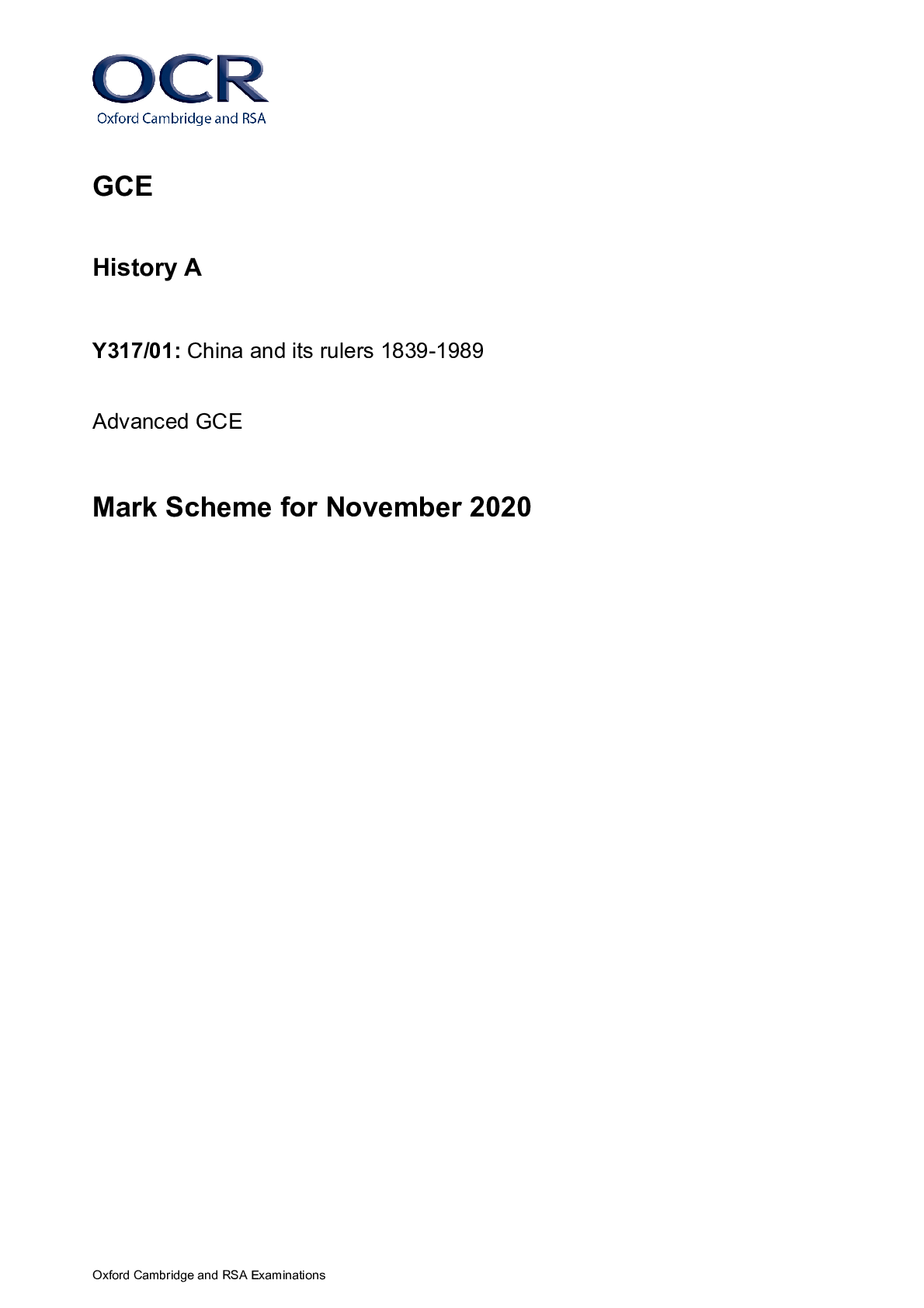
Buy this document to get the full access instantly
Instant Download Access after purchase
Buy NowInstant download
We Accept:

Reviews( 0 )
$6.50
Can't find what you want? Try our AI powered Search
Document information
Connected school, study & course
About the document
Uploaded On
Jul 17, 2022
Number of pages
17
Written in
Additional information
This document has been written for:
Uploaded
Jul 17, 2022
Downloads
0
Views
58





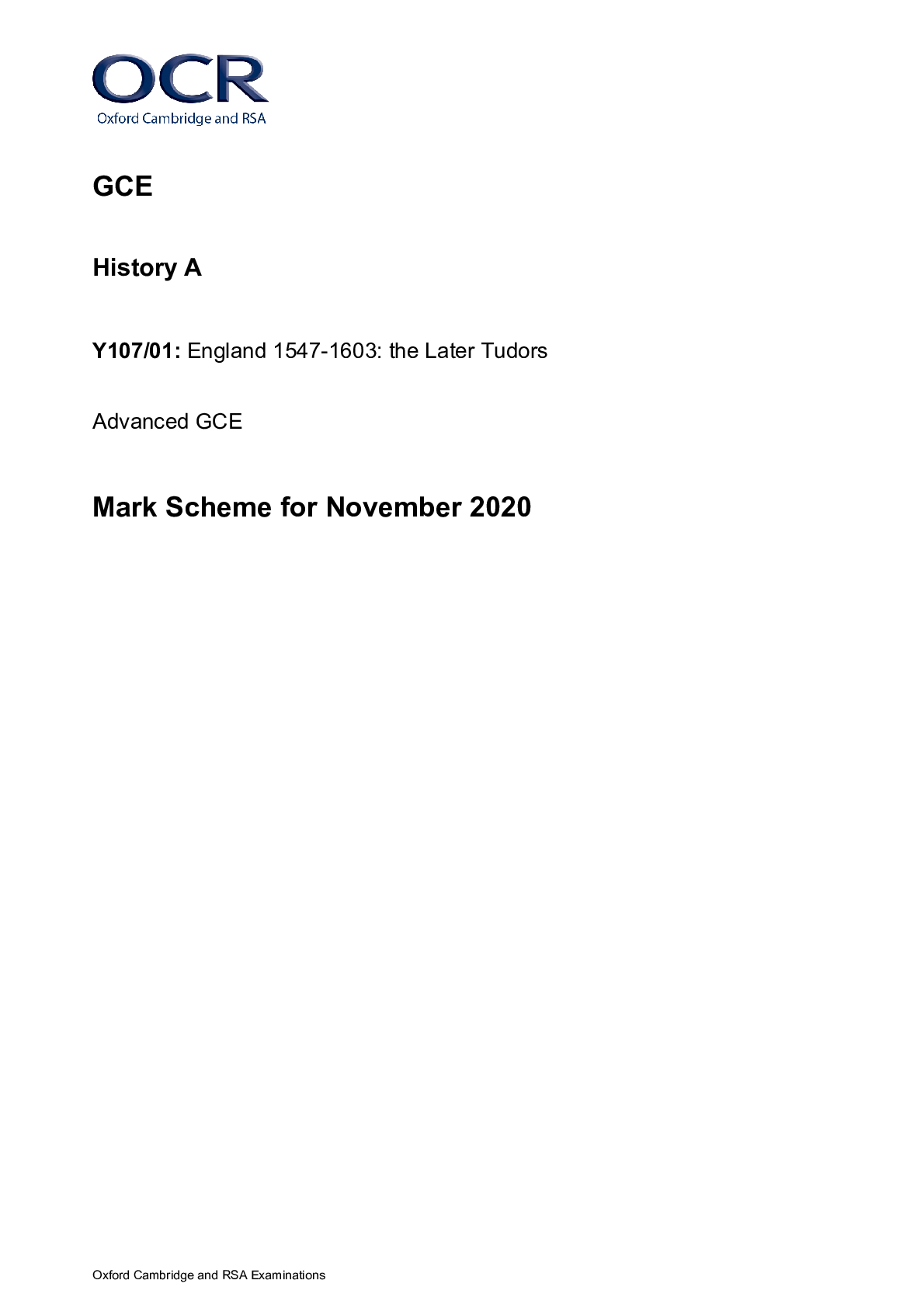
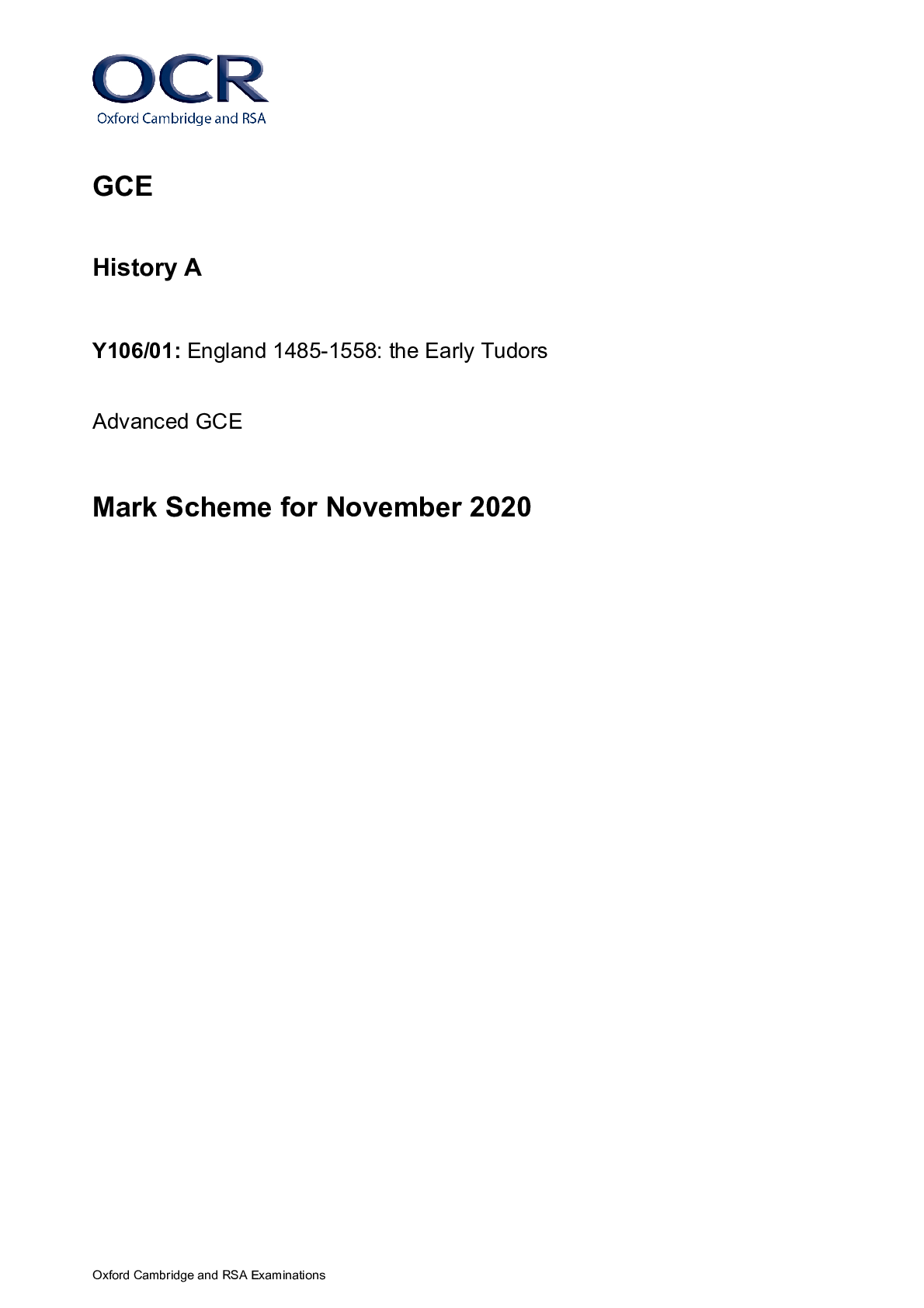
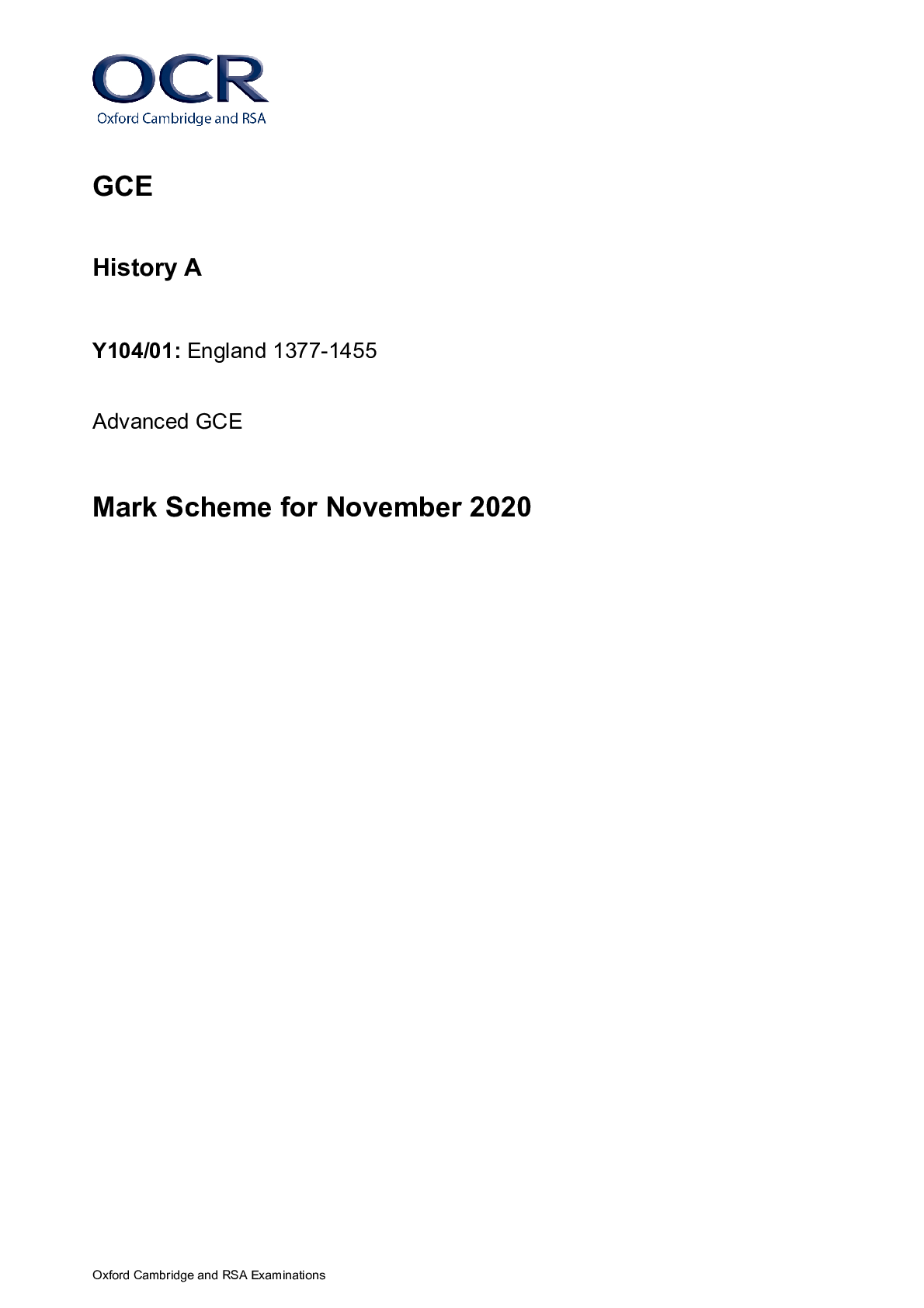
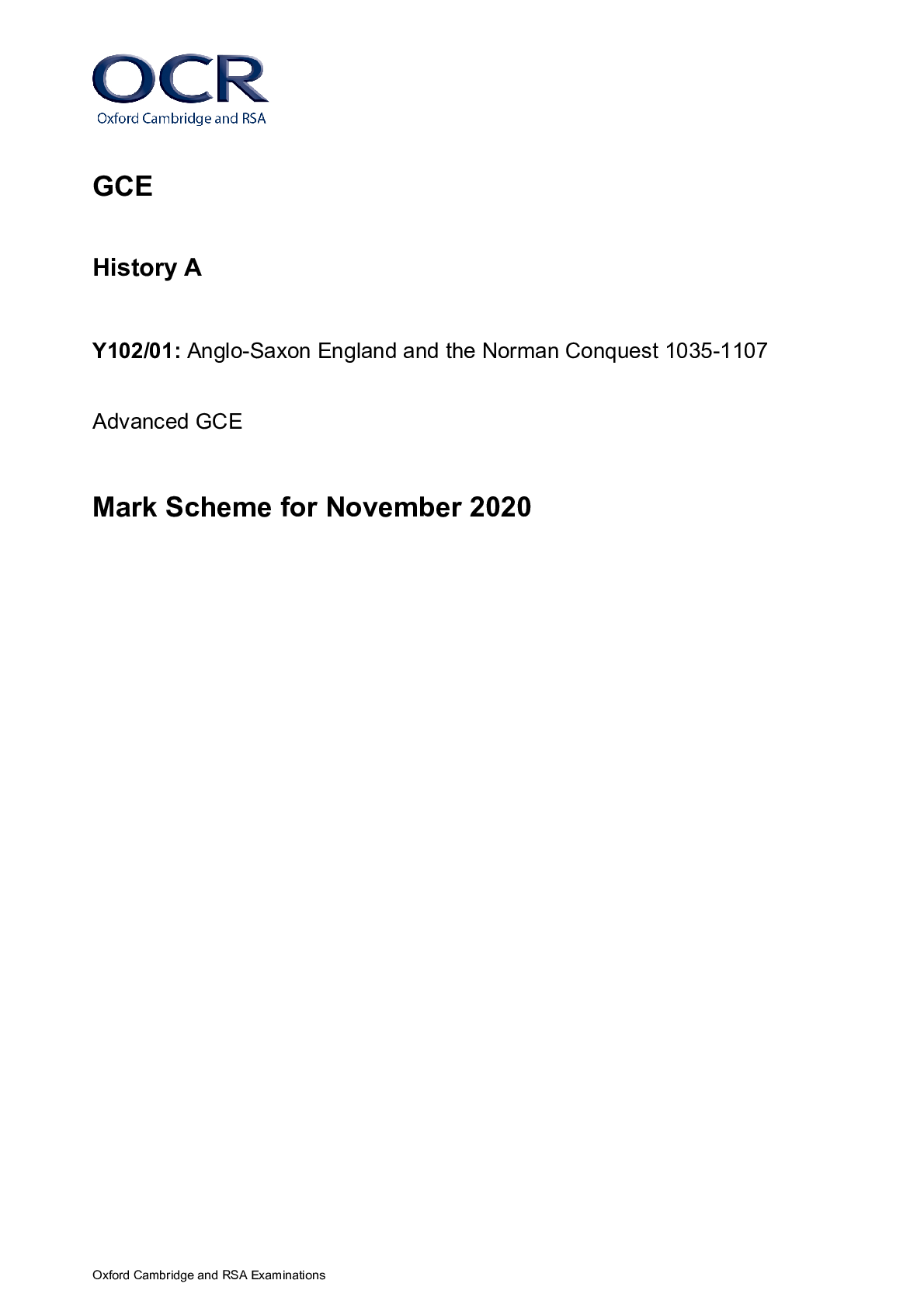
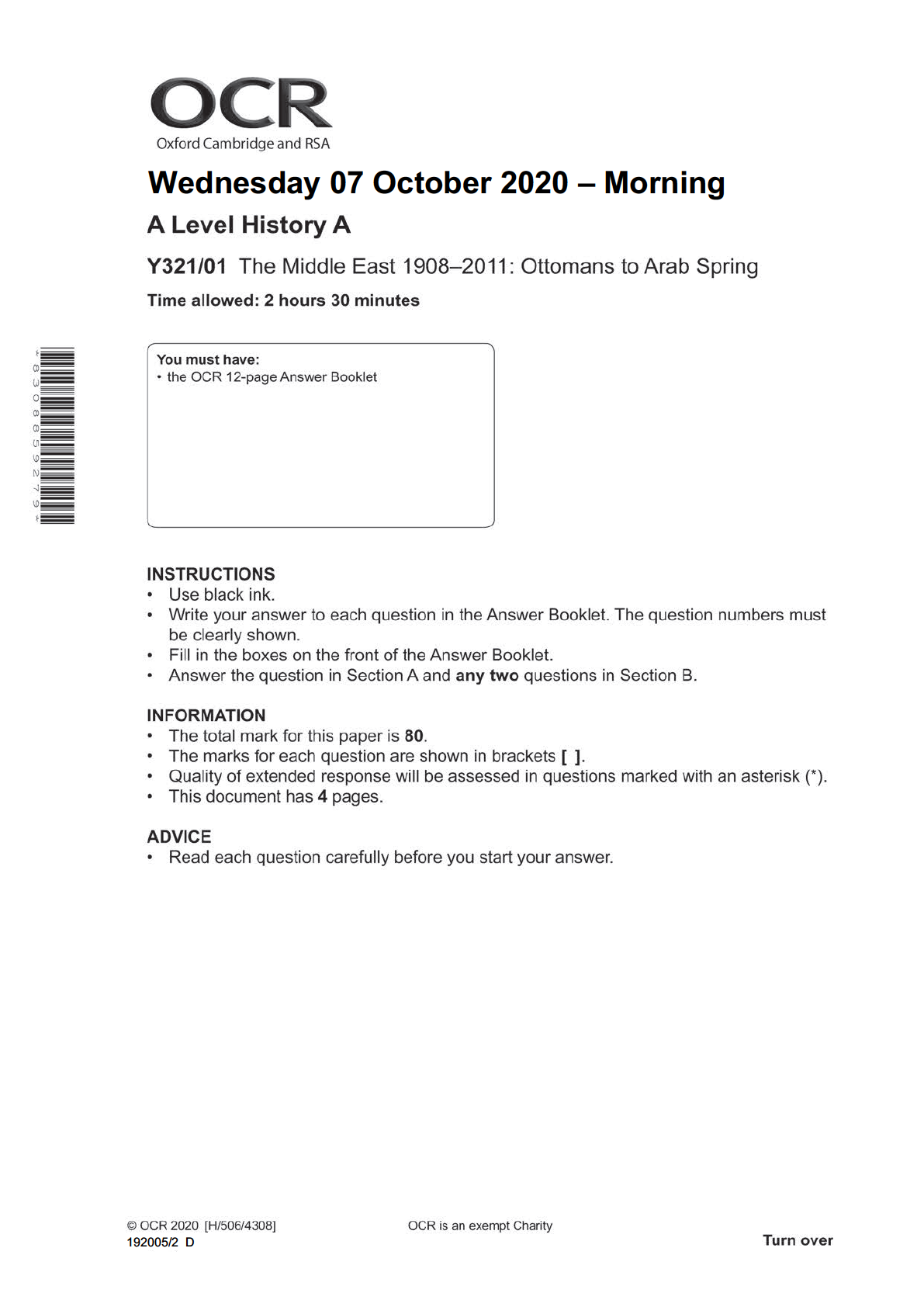
.png)

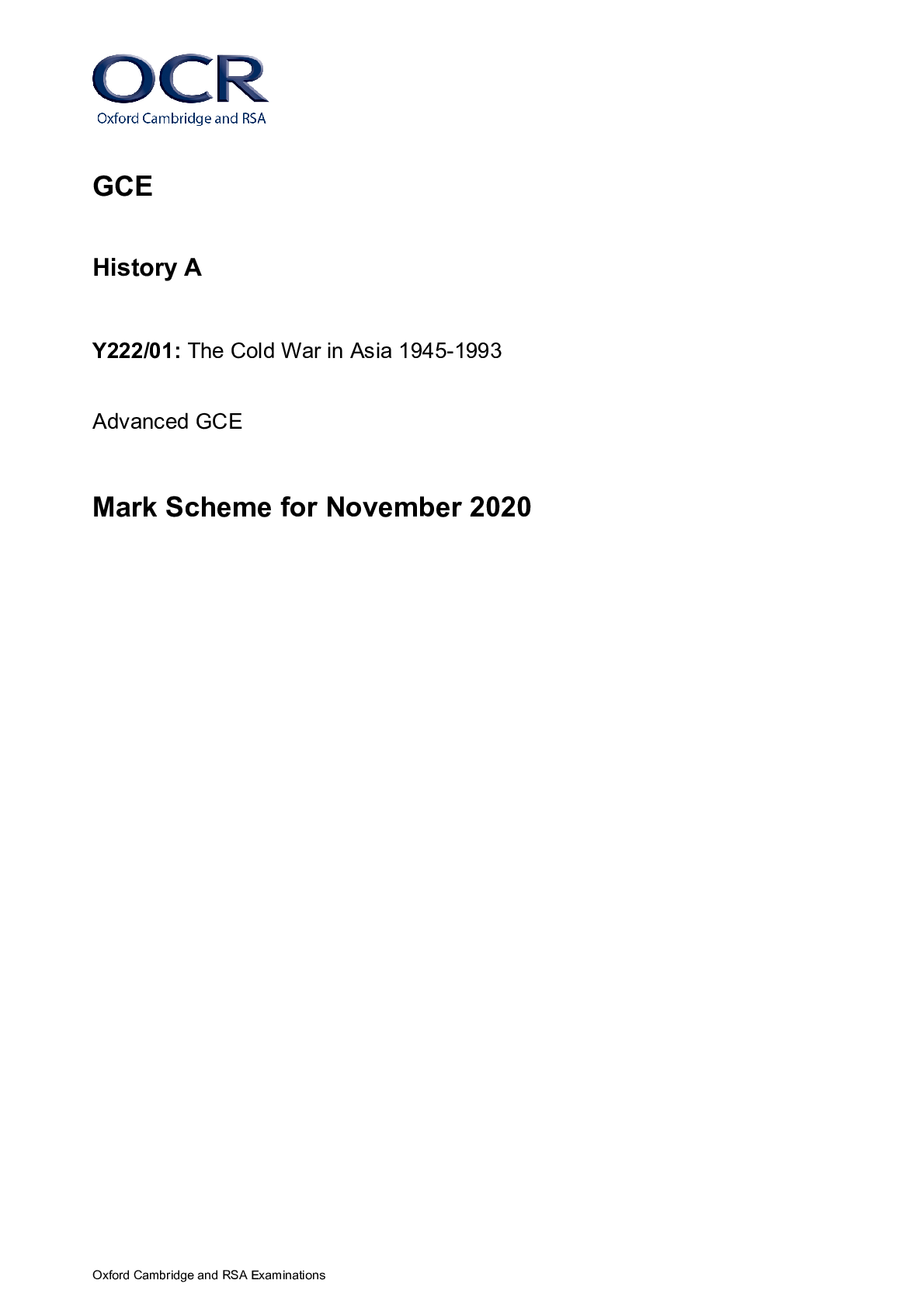


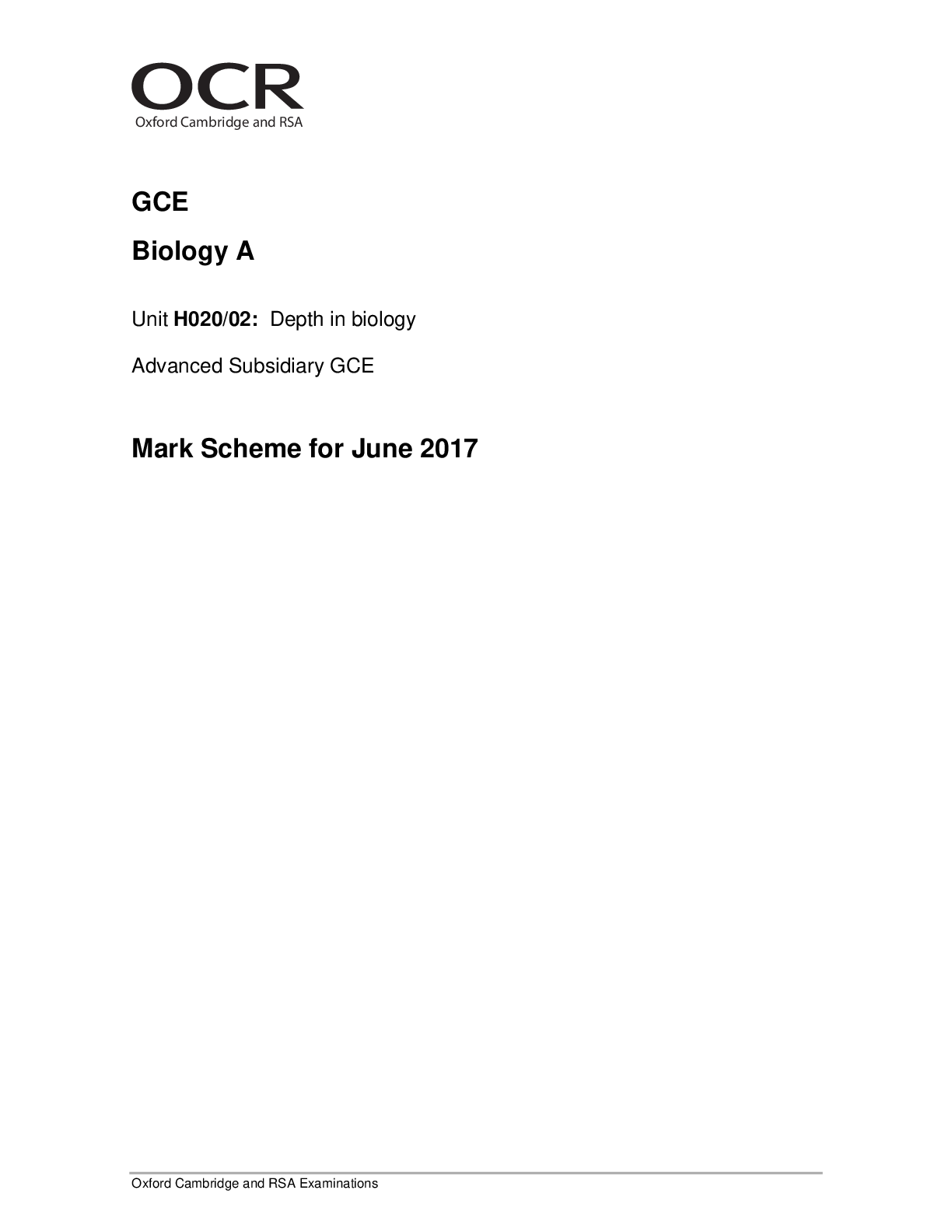
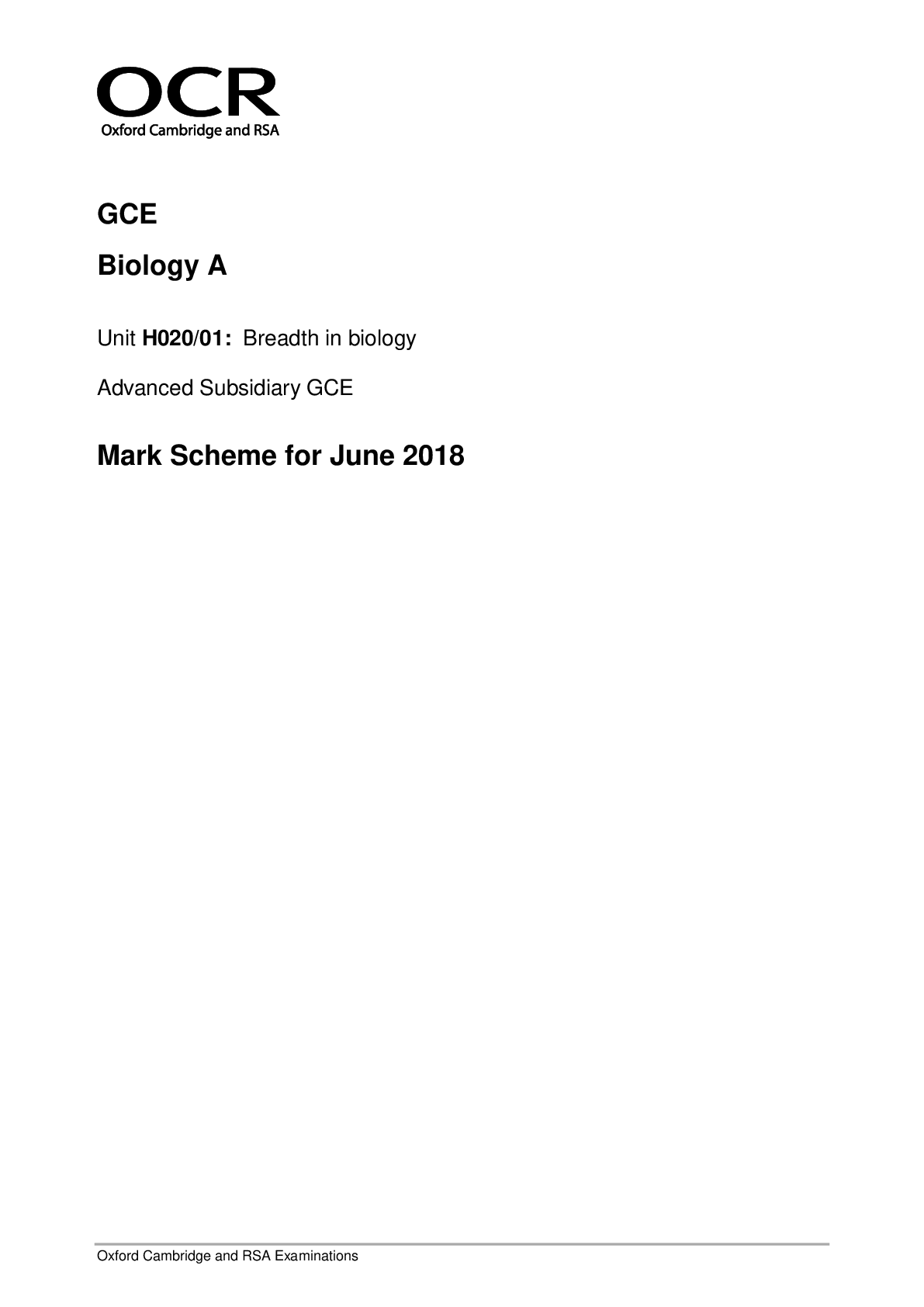

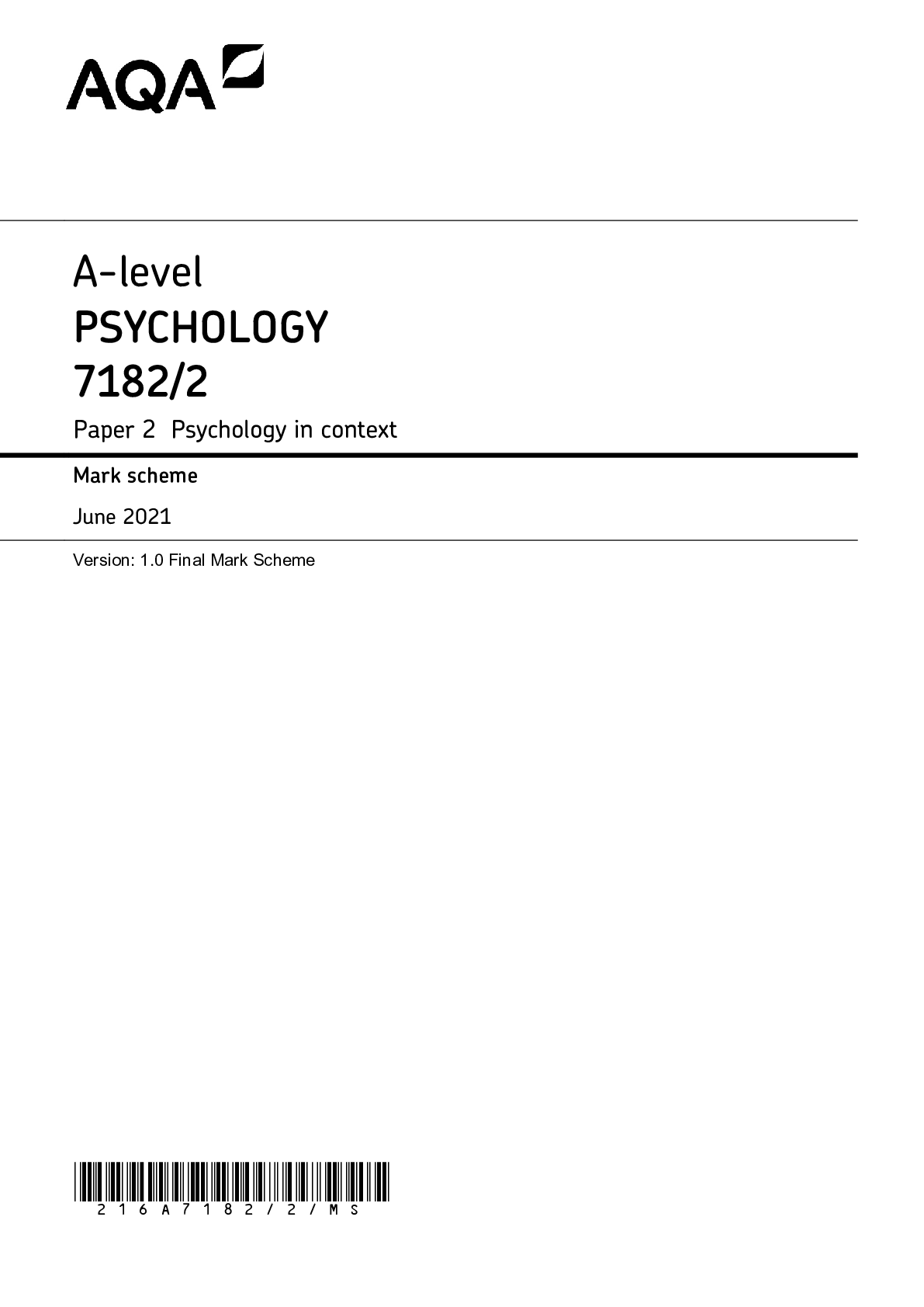
.png)






